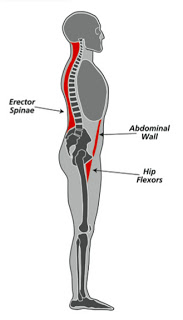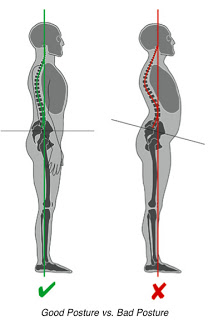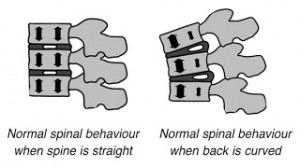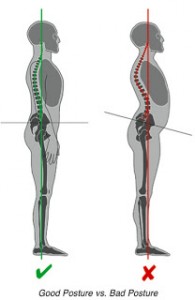Back Strengthening exercises are an important part of any exercise routine. We encourage our participants to think of back strengthening exercises as important to include in your daily routine as other activities like brushing your teeth for dental hygiene or maintaining a health diet to manage your weight.
Our body consists of muscles, bones and other tissue like the tissue that make up our organs and more. If we didn’t have a skeleton we would be a bag of tissue held together by our skin. The skeleton is like a scaffold, it’s our internal frame. Each bone connects to other bones usually with a bit of cartilage in between the bones. The bones are held in place by ligaments and tendons that connect to the musculature. Muscles move the bones. For a muscle to be able to move a bone relative to another bone it has to reach across a joint.
When a muscle tightens up, when it’s active, it shortens and thereby it reduces the distance between the two point it’s connected, too. To demonstrate, if you are in a sitting position, straighten your left arm out in front of you with your palm facing upward. Place the right hand on the biceps of the left arm while holding your arm out. Keeping your left arm out, bend your elbow bringing your left hand to your shoulder. The left lower arm moves towards the upper arm. You can feel the biceps move as it bulks up and in this case shorten, with your right hand. The biceps reaches across the elbow joint and shortens the distance between the lower arm and the upper arm. This movement is called flexion.
For every muscle that shortens/flexes and moves a body part in one direction, there has to be a muscles to do the same to reverse the movement. The reverse movement to flexion is called extension. In the case of your arm, this movement is done by the triceps. We refer to the two muscles as an antagonistic pair, because they work in opposition to each other.
Not all muscles are ‘big movers’ like the biceps. We have muscles that don’t have much movement ability at all, they have merely a static function, they hold. We also have many muscles that work as a team, they work together to allow us to do complex movements. You can for example bend and rotate the elbow and lower arm in one fluid co-ordinated move because there is an entire muscle group involved in the motion.
Looking at the overall body again we have to realise that the skeletal system that is our internal frame is literally strung together by a complex set of pulleys and movers. All these muscles act in opposition to another, an antagonist.
Using another model image, it helps to thing of the upright body much like a mast on a sailing boat. The mast in a boat is usually held up by four strong wires. If you were to cut any one of the ties that ancor the mast to the hull the mast would becomeseriously unstable and possibly fall over.
Let’s look at the human body again.
The main muscles that keep our upper body straight and upright in a standing position are the muscles of the back (erector spinae) that reach across the entire back from the hips to the head. As their antagonists we have the muscles of the abdominal wall and the hip flexors. (There are other muscles affecting a good spinal position and posture for example the muscles in your buttocks and the muscles of you chest. We will deal with those at a later stage).
If one of the muscles involved in holding our body upright is weak or extremely tight and exerting too much of a pull, the balance will be off.
Many people who have back problems tend to have weak muscles in the abdominal wall. As a result the pelvis isn’t held upright but it falls forward. The curve in the lower back increases. The muscles in the lower back can be weak too. They can strain and tighten up. The muscles of the hip flexors tend to be the strongest of the set. We use them all the time because we work them when we are walking pulling the thigh up.
For a healthy back it is important to regain and maintain the balance of these muscles. For any back strengthening exercise to be effective you need to also strengthen the abdominal musculature. It is equally important to stretch and thereby lengthen the muscles that are too tight, mainly the hip flexors and the muscles of the lower back. If a person engage in activities or exercises in an upright position that is load bearing (while they are on their feet) without having a healthy muscle balance they can greatly exasperate their back problems. It is therefore essential to strengthen and stretch these muscles on a regular basis.



